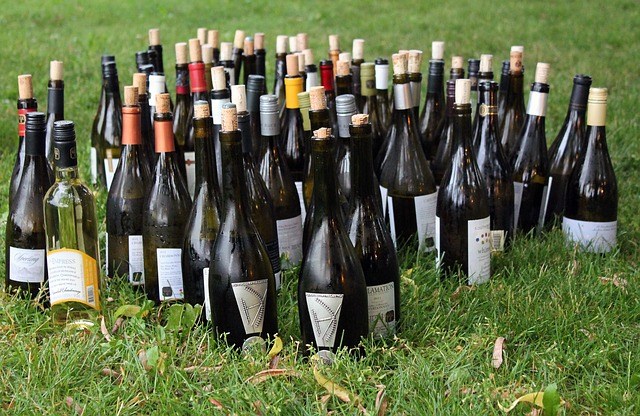Tips and Tricks On How to Spot A Good Wine
Spotting a good wine is more than just finding it out if it tastes good or not. It’s also about determining the less obvious factors that would make a particular bottle better than others. Many people make the mistake of judging a bottle solely by its price tag, but there are expensive wine options that fall flat or don’t age like they’re supposed to. On the other hand, there are also cheaper, less-popular alternatives that are surprisingly good quality.
How exactly do you differentiate a good wine from a bad one? Being able to tell them apart can not only give you a great wining and dining experience; it can also save you from finishing up a particularly bad bottle. Here are some of the most important points to take note of when discerning the quality of a wine.
Price
As mentioned above, you can’t completely tell the quality of a wine with just the price alone. Many things affect the price of a bottle, including its producer, provenance (it’s history, production process, etc.), or the middlemen that dictate the market price. The one thing that can justify the price for its quality is if the expensive wine has a popular label to go with it. If you’re eyeing a bottle of wine from France, for example, and the words “Appellation d’Origine Contrôlée” are on the label, you can rest assured that the price is well worth it. French wines with these brands are rare, and the mark is proof that they passed a series of extremely rigorous quality tests. Very few are granted the AOC title, so you know you’re getting the very best.
Check the label. This could give you more clues if the price of the bottle is worth it. See if they have a quality designation to guarantee that they underwent a well-defined quality control check.
Intensity
But sometimes, a look is not enough, and the only way to really discern if a wine is good or not is to actually taste it. The first thing you want to check for is the intensity of the flavors in the drink. Good wines should have a potent taste, even with just one first sip. The flavors are discernible, and they linger in your mouth. Watered-down wines will naturally have less flavoring than pure bottles.
The length with which the taste lasts in your mouth is also an indicator of the quality of the wine. If the flavor lasts longer, the quality is better.
Complexity
Of course, it’s not enough that your drink simply has a strong taste; the flavors also need to be right. You want your wines to have complexity. This means they don’t taste flat or one-dimensional, like every sip is exactly the same and it’s easy to get tired of the drink. Complex wines have many layers to them; like there’s always just a hint of something elusive, making every sip different from the last. It should keep you guessing; it can even engage your mind and senses. The way that each and every flavor unfolds is a journey.
Wine is a time-intensive drink. This means that the flavor you taste on the first sip is different from what you get mid-drink, and will be different again once you finish. You may detect a hint of lemon when you first start, but it can evolve into something sweeter as you polish off the drink. When a wine takes on you on this journey, you know it’s good liquor.
Balance
But on that same note, the intensity, length, and complexity of the flavor should be balanced out. You don’t want to be too overwhelmed with everything that’s going on that you can hardly keep track of everything, much less actually enjoy it. Drinking good wine should please you, not confuse you.
It helps to have a little background knowledge on the wine you’re drinking when checking it for balance. A quick research should tell you what to you expect of your drink. What should the tannin levels be? Tannin is a naturally occurring chemical compound that gives wines a dry and astringent taste (think unsweetened black tea or dark chocolate). Wines with high tannin content will have earthier tones and deeper flavors; they will not taste sweet and light.
Should they taste sweet or dry? In this case, the “dryness” refers to how much residual sugar is naturally left over from the original grapes processed. The more residual sugar there is, the less dry and the sweeter the wine is. Case in point, Brut Champagne has a relatively low residual sugar content, which is why it is dry and unsweet, compared to German Riesling, with higher sugar levels.
The fruit source and alcohol content will also play a part in how your wine should taste. If you have an idea how your wine should taste, it’s easy to know if there’s an imbalance in the flavor. A wine that is supposed to be sweet should not be excessively tart or astringent. If your drink is a robust, flavorful variety, there’s something wrong if it tastes mellow instead. Having too much or too little of one or more components is a sign of a bad wine.
Scent
Here’s a tip: Swirl, sniff, then sip.
When you sniff at your wine, what do you smell? Do you detect strong fruity hints, like an apple or lemon? Do you get a whiff of oak, subtle and underlying all the other scents? Or do you barely smell anything distinguishable at all, almost just like a random mixture of liquids? Good wines have a strong but pleasant odor. You can already get an idea as to how it would taste like based on the scent alone. Just like flavors, aromas also come in layers that you can pick up as you go through your drink. These should likewise unfold slowly and pleasantly, one by one to allow you to savor them and not all at once to overwhelm you.
Some signs that a wine has gone bad
You don’t have to be a wine connoisseur to tell if a particular bottle has already gone bad. Below are some of the things you need to watch out for.
The first is the scent. It is easy to tell if a wine is bad if there is something immediately off about the smell. Wines should smell earthy; like something fruity, herbal, or flowery. Any other scent, especially if it is a strong one, should alert you. Wines that went bad will typically smell similar to wet cardboard or vinegar.
Be aware of the general flavor of the wines as well. Red wines should not be completely sweet. Too much sweetness in a red wine is a sign that it has been exposed to heat, and is undrinkable. Likewise, if a wine tastes fizzy, and it is not sparkling wine, it is no longer good for consumption, as it has undergone second fermentation and cannot be properly processed by your body anymore.
Storage plays an important part in the longevity of a wine, even those that are supposed to age well. If wine is not stored properly, as is the case if it is exposed to too much heat or has been in contact with the air for too long, it might no longer be good to drink.
Good wine should taste good. Whether you’re a wine novice or a connoisseur, it’s good to be able to spot good quality wines from bad ones. Take note of its price and label, taste it for intensity, complexity, and balance, and get a whiff of it to know if it smells right.
Renzo De Leon


